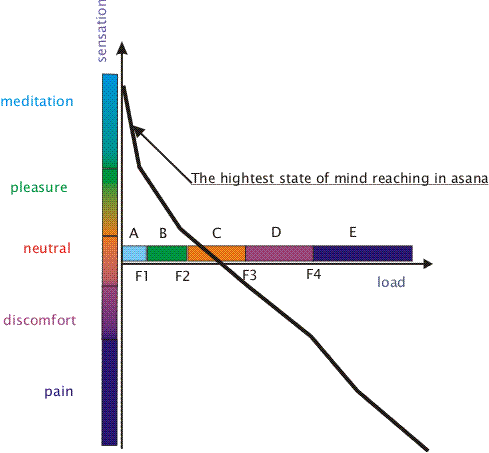| Because flexible board gives opportunity
to regulate loads in asanas, some interesting researches were
carried out to find out how meditative state of mind depends
on loads in asanas. |
 |
- (0-F1) limited loads close to zero;
meditation appears
after short period of time.
- (F1-F2) with some efforts to relax one may reach after some
period of time positive sensations (pleasure, joy); meditation
appears sometime;
- (F2-F3); with some efforts to relax one may remove discomfort
and reach neutral sensations; there
are no meditation in asana.
- (F3-F4) with some efforts to relax one may reduce discomfort
but not completely and after some period of time you quit; There
is no meditative state.
- (> F4) range of loads when increasing discomfort
or pain appears and you cannot relax at all; asana
performs only short period of time; there
are no positive sensation in asana.
As far as I know begginers practice most yoga asanas within the
ranges C and D when there is no meditative state and only some asanas
like (savasana, paschimotasana) may be performed within the ranges
A and B.
Masters of yoga and men with good flexibility are able to practice
most asanas within the ranges of loads B and C and reach meditative
state;
With the help of flexible board everyone may perform asana and
may reach its form and also may reduce asana's loads to ranges (A-C)
e.g. reach positive sensation or meditaton.
|



